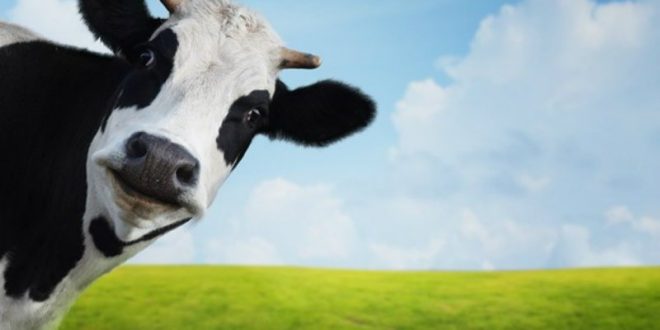Researchers have underestimated just how much livestock feces and gas have contributed to global warming, a new study contends.
Scientists from the Joint Global Change Research Institute (JGCRI) found that global livestock methane (CH4) emissions for 2011 are 11% higher than the estimates based on guidelines provided by the Intergovernmental Panel on Climate Change (IPCC) in 2006. This encompasses an 8.4% increase in CH4 from enteric fermentation (digestion) in dairy cows and other cattle and a 36.7% increase in manure management CH4 compared to IPCC-based estimates. Revised manure management CH4 emissions estimates for 2011 in the US from this study were 71.8% higher than IPPC-based estimates.
Dr. Julie Wolf, U.S. Department of Agriculture (USDA), Agricultural Research Service (ARS), senior author of the study said: “In many regions of the world, livestock numbers are changing, and breeding has resulted in larger animals with higher intakes of food. This, along with changes in livestock management, can lead to higher methane emissions. Methane is an important moderator of the Earth’s atmospheric temperature. It has about four times the atmospheric warming potential of carbon dioxide. Direct measurements of methane emissions are not available for all sources of methane.. Thus, emissions are reported as estimates based on different methods and assumptions. In this study, we created new per-animal emissions factors — that is measures of the average amount of CH4 discharged by animals into the atmosphere — and new estimates of global livestock methane emissions.”
The authors re-evaluated the data used to calculate IPCC 2006 CH4 emission factors resulting from enteric fermentation in dairy cows and other cattle, and manure management from dairy cows, other cattle and swine. They show that estimating livestock CH4 emissions with the revised emissions factors, created in this study, results in larger emission estimates compared to calculations made using IPCC 2006 emission factors for most regions, although emission estimates varied considerably by region.
Dr Ghassem Asrar, Director of JGCRI, a co-author of study, said: “Among global regions, there was notable variability in trends in estimated emissions over recent decades. For example, we found that total livestock methane emissions have increased the most in rapidly developing regions of Asia, Latin America and Africa. In contrast, emissions increased less in the US and Canada, and decreased slightly in Western Europe. We found the largest increases in annual emissions to be over the northern tropics, followed by the southern tropics.”
The estimates presented in this study are also 15% larger than global estimates provided by the U.S. Environmental Protection Agency (EPA), only slightly smaller than estimates provided by the EPA for the US, 4% larger than EDGAR (Emissions Database for Global Atmospheric Research) global estimates, 3% larger than EDGAR estimates for US and 54% larger than EDGAR estimates for the state of California. Both the EPA and EDGAR use IPCC 2006 default information which may have contributed to their under estimations.
Agencies/Canadajournal
 Canada Journal – News of the World Articles and videos to bring you the biggest Canadian news stories from across the country every day
Canada Journal – News of the World Articles and videos to bring you the biggest Canadian news stories from across the country every day




It seems anyone can call themselves a scientist today.
What complete and total nonsense! These idiots haven’t a clue!
How could anyone be so stupid as to think animal farts could affect something as humongous as the climate. These people should get some serious mental help!
Do you have a competing scientific study to support your allegation that “these people should get some serious mental help”.
Otherwise, objecting to the conclusions of a scientific study without any scientific evidence is greater reason to suspect that “serious mental help” is needed.
I would be interested to see a comparison between the population of wild ruminants of the 20th century contrasted against current state domestic cattle. To be honest I much of the grand statements made in these studies are a bit suspect, for example: Ocean acidification, which is completely against the laws of chemistry. You could have neutralization, ,but it would a volume of acid equal to the volume of salt in all the oceans. In other words, an entire
second planet of acid just to become a neutral state. Needless to say this kind of hypothesis would trigger anyone
to question the global warming narrative. At this point Il keep my taxes thank you.
RESEARCHERS UNDERESTIMATED ( What a joke )
You should spend your money on better things
The Cows have always been on this planet,the millions of buffalo are now gone
which have been replaced by more cows……………….
PLEASE DO NOT EAT BEANS, Because you are polluting the planet with methane.
CANADIANS ARE OBSESSED WITH COW FARTS TO THE POINT THEY EVEN BAG THEM FOR LATER SNIFFING. THIS IS NO JOKE ITS A WORLD KNOWN FACT THAT CANADIANS ARE OBSESSED WITH COW FART
Gee what about all the Buffalo that no longer exist? Your belief that the Sun doesnt control the SOLAR system is as sensible as Charles Darwin leading a gay parade.Back to “fossil fuels” seas of Methane Caspian mission discovered on Titan
One point not raised in this article is that cows eat vegetable matter. The carbon they emit as methane originated in that vegetable matter, which in turn obtained it via photosynthesis out of the atmosphere.
So the carbon being released by the methane into the atmosphere had been taken earlier out of the atmosphere.
Clearly, methane remains much longer in the atmosphere than CO2, but measuring the added carbon in the atmosphere from the methane, while ignoring the carbon removed from the atmosphere from the creation of the methane, doesn’t appear to me to be scientifically rigorous.
You would want to know the residual carbon impact after calculating the carbon removed by the vegetable matter.